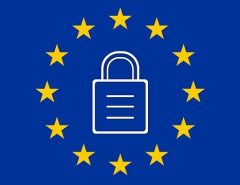Cybersecurity threats compel us to revisit certain identity-based terminologies and Personally Identifiable Information is probably one of the most important ones. Personally Identifiable Information (PII) signifies any substantial information or data that can help a governing body trace the identity of the concerned individual; either directly or indirectly. However, there are two separate versions to this terminology with each having its own significance.
Understanding PII and the Existing Categories
Personally Identifiable Information can be absolutely anything that distinguishes one individual from the other, on the basis of existing data sets. PII can be segregated into two groups i.e. Linked Information and Linkable Information. While the former involves specific and direct data, linked information is more like a piece of puzzle that requires another entity to reveal all the details regarding the user. The latter performs in the best possible manner when combined with similar data sets; thereby painting a complete, user-oriented picture.
How to Protect PII according to the GDPR Guidelines?
The General Data Protection Regulation will soon be implemented and majority of organizations are already gearing up for the same. This brings us to the fact that companies need to be extra careful regarding the Personally Identifiable Information as any breach can attract penalties and fines. With GDPR guidelines primarily focusing on the European Union and the associated organizations, it is the responsibility of the concerned firms to safeguard the privacy of the customers.
It needs to be understood that the underlining concept of Personally Identifiable Information is what leads to these security challenges, in the first place. With companies in possession of these customer-specific insights, it becomes their responsibility to protect the same or take necessary measures if the same gets compromised. Based on speculations, GDPR isn’t expected to put forth specific guidelines that would protect the PII and companies will have to think of bespoke strategies according to the nature of work. GDPR would only focus on data governance for the moment and if the concerned organization fails to abide by the rules, there will be consequences.
Read more: Preparing for GDPR? Here are some security tips you must know
- Protecting Personal Data
While PII is a pretty discrete terminology, Personal Data covers a wider area of concern. The first step towards protecting PII is to close in on the threats associated with personal data sets and eliminate them completely. Companies falling under the imposed guidelines must look to cover every aspect of data protection and not just the linked and linkable PII-specific ones.
- Revisiting the User Rights
Under the GDPR, every customer should be made to sign the opt-in forms, furnishing the type, nature and longevity of the secured information. That said, the concerned individuals are in complete control of the PII despite companies storing the same within the databases. Transparency is therefore, a prerequisite for protecting the Personally Identifiable Information.
- Addressing the Security Structure
The General Data Protection Regulation redefines the set of responsibilities for the organizations. Be it the data subject, processor or the data controller— every link needs to be addressed for securing PII in the best possible manner. Every company, must therefore, direct the data controller and processor to keep a track of the user data and how the same is being used. Having a retrievable and documented strategy is a great technique for safeguarding sensitive and confidential data sets.
- Reporting Data Breaches
There must be a provision for deploying a Data Protection Officer (DPO) who can safeguard the data in the best possible manner. A DPO should address a reported breach, almost immediately, should the PII gets compromised in one way or the other. The GDPR offers a 72 hour window for reporting a breach under the Data Protection Act (DPA). However, if the PII is already encrypted and the last layer hasn’t been compromised, there isn’t an immediate requirement to report the same.
Inference
One of the best strategies for GDPR compliance is to concentrate more on the Personally Identifiable Information. While the above mentioned steps can help, companies should opt for reliable security products as well as security services from the likes of Seqrite to handle the requirements in a hassle free and organized manner. At the end, the GDPR is more like an opportunity for certain organizations, allowing them to re-examine the confidential data sets, analyze the time-frame of retention and render additional security measures to the same. This would eventually streamline the PII and reap benefits for customers and businesses, especially in the long run.
As an IT security partner for your business, Seqrite provides comprehensive security from advanced cyber threats. To know more




